
Geochronology
Scope & Guideline
Exploring the depths of Earth's history, one layer at a time.
Introduction
Aims and Scopes
- Radiometric Dating Techniques:
The journal extensively covers advancements in radiometric dating methods, including U-Pb, Th-U, and Rb-Sr, emphasizing their applications in various geological contexts. - Cosmogenic Nuclides:
Research articles frequently focus on the use of cosmogenic nuclides, such as 10Be and 14C, for dating geological features and understanding landscape evolution, particularly in glacial and post-glacial environments. - Thermochronology:
The journal highlights studies on thermochronological techniques, helping to reconstruct thermal histories of geological samples and providing insights into tectonic and climatic processes. - Methodological Innovations:
A significant portion of the journal is dedicated to novel methodological advancements, including improvements in analytical techniques, data analysis, and calibration protocols that enhance the accuracy and reliability of geochronological data. - Interdisciplinary Applications:
Geochronology integrates with various fields such as archaeology, paleoclimatology, and sedimentology, facilitating a multidisciplinary approach to understanding Earth’s history.
Trending and Emerging
- Integration of Machine Learning and AI:
The application of machine learning and artificial intelligence in geochronology is gaining traction, with studies exploring automated data analysis and modeling techniques to enhance the efficiency and accuracy of age determinations. - Bayesian Modeling Approaches:
There is a growing emphasis on Bayesian modeling techniques, which allow researchers to incorporate uncertainties and improve the robustness of age-depth relationships and geological interpretations. - In Situ Analysis Techniques:
Advancements in in situ analysis methods, particularly laser ablation and noble gas extraction, are emerging as key themes, providing high spatial resolution and detailed chronological information from geological samples. - Interdisciplinary Studies:
The trend towards interdisciplinary research is evident, with increasing collaborations between geochronologists and scientists from fields such as climate science, archaeology, and environmental science, broadening the applications of geochronological data. - Focus on Climate Change and Anthropogenic Impacts:
Research addressing the impacts of climate change and human activities on geological processes is on the rise, with studies employing geochronological techniques to understand historical shifts and their implications for the future.
Declining or Waning
- Traditional Luminescence Dating:
While luminescence dating remains important, there is a noticeable decline in traditional approaches as researchers increasingly favor more sophisticated techniques and models that provide better resolution and reliability. - Basic Radiometric Techniques:
The focus on basic radiometric techniques without integration of advanced data analysis methods has diminished, as the field moves towards more complex modeling and Bayesian approaches for age determination. - Single Chronometer Studies:
There is a waning interest in studies that rely solely on single chronometers for dating. The trend is shifting towards multi-method approaches that provide a more comprehensive understanding of geological timelines. - Generalized Geological Applications:
Research that broadly applies geochronological techniques without specific geological context is less prominent, as studies become more targeted and context-specific to enhance relevance and impact.
Similar Journals
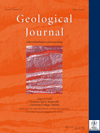
GEOLOGICAL JOURNAL
Uncovering the planet's history with scholarly rigor.GEOLOGICAL JOURNAL, an esteemed publication by WILEY, has been at the forefront of geological research since its inception in 1951. With an ISSN of 0072-1050 and E-ISSN of 1099-1034, this journal serves as a vital platform for disseminating high-quality, peer-reviewed research in the field of geology. Operating out of the United Kingdom, the journal proudly features a Scopus rank of 80 out of 321 in the Earth and Planetary Sciences category, reflecting its commitment to scholarly excellence, with a 2023 category quartile ranking of Q2. As part of its innovative approach, GEOLOGICAL JOURNAL seeks to foster interdisciplinary collaborations, advancing our understanding of earth processes, materials, and history. Although it does not offer open access options, its robust subscription model ensures that both professionals and students have access to groundbreaking insights. With a publication history that spans over seven decades, the GEOLOGICAL JOURNAL continues to be an indispensable resource for the global geological community, encouraging discoveries that shape our comprehension of the planet.

INTERNATIONAL JOURNAL OF EARTH SCIENCES
Transforming Understanding of Geological ProcessesINTERNATIONAL JOURNAL OF EARTH SCIENCES, published by Springer, is a leading journal in the field of Earth and Planetary Sciences, distinguished by its Q1 quartile ranking in the 2023 category of Earth and Planetary Sciences (miscellaneous). With an ISSN of 1437-3254 and an E-ISSN of 1437-3262, this journal has been a pivotal platform for researchers, academics, and practitioners since its inception in 1996. The journal's focus encompasses a broad range of topics within Earth sciences, making it a vital resource for contributions that enhance our understanding of geological processes, climate change, and planetary dynamics. The impact factor reflects its high standards and the significance of the research it publishes, ranking it in the 74th percentile among its peers as per Scopus. Furthermore, the journal offers Open Access options, facilitating the global dissemination of groundbreaking research. The editorial team is committed to advancing knowledge in Earth sciences, serving as an essential reference for students and professionals looking to engage deeply with this dynamic field.
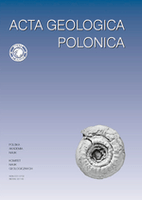
ACTA GEOLOGICA POLONICA
Innovative research shaping the landscape of geology.ACTA GEOLOGICA POLONICA is a distinguished journal published by the Polska Akademia Nauk, in collaboration with the University of Warsaw's Geology Department. Since its inception, it has served as a vital platform for disseminating innovative research in the field of Geology, reflecting a commitment to advancing scientific knowledge in Earth and planetary sciences. With an ISSN of 0001-5709 and an E-ISSN of 2300-1887, this journal provides a rigorous review process and is classified in the Q3 quartile for Geology as of 2023, indicating its growing influence in the discipline. Despite not being open access, the journal facilitates meaningful contributions that span a range of geological topics from fundamental research to applied sciences, thereby enriching the academic landscape. Researchers, professionals, and students alike are encouraged to engage with the valuable findings and discussions contained within its pages, which continue to shape the future of geological inquiry.

Mineralogical Journal-Ukraine
Unlocking the mysteries of minerals and earth sciences.Mineralogical Journal-Ukraine is a key academic publication dedicated to advancing the field of mineralogy and geochemistry, under the esteemed auspices of the M.P. Semenenko Institute of Geochemistry, Mineralogy & Ore Formation of NAS Ukraine. Since its inception in 2019, this journal has established itself as an essential resource for researchers and professionals engaged in the study of energy, fuel technology, and the earth sciences, despite its present rankings reflecting a developing impact within these specific categories on Scopus. Published in Ukrainian and available in both print and online formats, the journal not only aims to disseminate high-quality research but also encourages inclusive access to vital findings in mineral exploration, petrology, and geochemical processes. With a commitment to excellence and an expanding scope of research, Mineralogical Journal-Ukraine stands as a pivotal platform for innovation and collaboration among scientists striving to understand the complexities of mineral formation and ore deposits.

BASIN RESEARCH
Bridging Theory and Application in Basin StudiesBasin Research, published by Wiley, is a leading journal in the field of Geology, with a distinguished reputation affirmed by its Q1 ranking in the 2023 category of Earth and Planetary Sciences. Since its inception in 1988, the journal has been at the forefront of fundamental and applied research surrounding sedimentary basins, delving into their evolution, architecture, and dynamics. With an impressive Scopus rank of #36 out of 321, placing it in the 88th percentile, Basin Research serves as a critical platform for researchers, professionals, and students engaged in advancing our understanding of geological processes and their implications for natural resources and environmental policies. The journal is accessible to a global audience and emphasizes high-quality, peer-reviewed articles that cover a diverse array of topics from basin analysis to sedimentology and beyond. For those interested in deepening their insights into this vital area of study, Basin Research stands as an invaluable resource in the academic landscape.
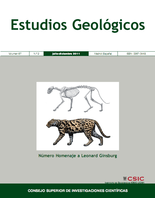
ESTUDIOS GEOLOGICOS-MADRID
Unveiling Geological Insights for a Sustainable Future.ESTUDIOS GEOLOGICOS-MADRID is a prominent journal in the field of geology, published by the esteemed Consejo Superior de Investigaciones Científicas (CSIC) in Spain. Established in 1976, this Open Access journal has been a vital resource for researchers and professionals since its inception. With an impact factor reflecting its contribution to the Earth and Planetary Sciences community, ESTUDIOS GEOLOGICOS-MADRID currently holds a Q3 category ranking in Geology as of 2023, showcasing its relevance and quality within the discipline. The journal publishes a diverse array of geological studies, ensuring wide-reaching access to significant research findings, thereby promoting collaboration and knowledge sharing. Established as a platform for both foundational research and applied geology, this journal fosters academic growth and contributes to understanding the Earth’s processes. Researchers, professionals, and students are encouraged to explore its extensive archive, which includes publications from 1976 to the present. For more information, visit the journal's editorial office at Editorial CSIC, C/VITRUVIO 8, 28006 MADRID, SPAIN.
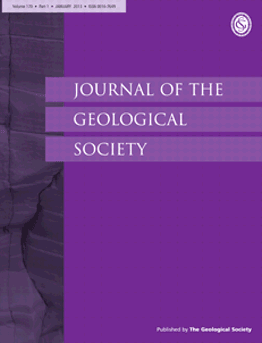
JOURNAL OF THE GEOLOGICAL SOCIETY
Your Premier Source for Geological Innovation and DiscoveryJOURNAL OF THE GEOLOGICAL SOCIETY, published by GEOLOGICAL SOC PUBL HOUSE, is a premier academic journal dedicated to advancing the field of geology. With a rich history dating back to 1845 and continuously published until 2024, this journal caters to a diverse audience of researchers, professionals, and students involved in earth sciences. The journal is recognized for its high impact factor, situating it in the top Q1 category in the field of geology, as indicated by its impressive Scopus rank of #49 out of 321, positioning it at the 84th percentile in Earth and Planetary Sciences. This esteemed scholarly platform promotes rigorous peer-reviewed research, ensuring that novel findings contribute to the global geological discourse. Although it operates under a subscription model, the journal's archive offers valuable insights for anyone pursuing excellence in geological research. The JOURNAL OF THE GEOLOGICAL SOCIETY stands as a vital resource for disseminating scientific knowledge and fostering educational growth within the field.

Cuaternario y Geomorfologia
Pioneering Insights in Geography and GeologyCuaternario y Geomorfologia is a distinguished journal published by the Spanish Quaternary Research Association, focusing on the interdisciplinary study of Quaternary research, geomorphology, and related fields. With its ISSN 0214-1744 and a publication history spanning from 2012 to 2024, the journal serves as a critical platform for researchers and practitioners in geography, geology, and paleontology. Although its current Scopus rankings place it in the lower quartiles across various categories, being Q4 in Earth-Surface Processes, Geography, Planning and Development, Geology, and Paleontology, Cuaternario y Geomorfologia continues to push boundaries within its sphere, aiming to foster a deeper understanding of Earth sciences. Situated in Madrid, Spain, the journal's commitment to sharing groundbreaking research without access barriers enhances its value for academics, offering insights that drive forward the fields of Quaternary studies and beyond. Researchers, professionals, and students alike will find a rich repository of knowledge within its pages, making it an essential resource for current and aspiring experts in the discipline.

Solid Earth Sciences
Connecting geoscience with real-world impact.Solid Earth Sciences is a dynamic open-access journal published by Elsevier, dedicated to advancing our understanding of the Earth's subsurface processes and materials. Since its inception in 2016, the journal has established itself as a vital resource for researchers and professionals in the fields of geochemistry, petrology, geology, geophysics, and geotechnical engineering, achieving a notable Q2 ranking in multiple categories as of 2023. With an ISSN of 2451-912X, the journal aims to disseminate high-quality research that enhances knowledge of earth surface processes and the intricate interactions within our planet's systems. The journal is indexed in Scopus, showcasing an impressive rank in various sub-disciplines, with a rank of #96 in Geology and a noteworthy percentile in Earth and Planetary Sciences. Solid Earth Sciences offers a platform for innovative studies, comprehensive methodologies, and cutting-edge technological advancements that cater to a global audience of scientists, academics, and students. With its commitment to open access, it fosters wider dissemination and impact of research outcomes, ensuring that pivotal discoveries reach stakeholders and contribute to real-world applications.
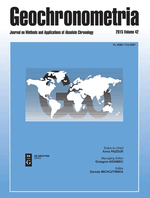
Geochronometria
Elevating Geochronology to New HeightsGeochronometria is a renowned journal dedicated to the field of Earth and Planetary Sciences, published by SCIENDO in Germany. With a history spanning over two decades since its inception in 2000, it has established itself as a key platform for disseminating innovative research and methodologies in geochronology, radiometric dating, and related disciplines. Currently, it holds a respectable Q2 ranking in the subject area, showcasing its relevance and influence, particularly with a Scopus rank of #92 out of 159 journals in Earth and Planetary Sciences, which places it in the 42nd percentile. This journal is committed to facilitating open discussions and advances in understanding geological time scales and processes, making it an essential resource for researchers, professionals, and students alike. Although it is not an open-access journal, its significant contributions to the scientific community underscore its pivotal role in advancing knowledge within the field.